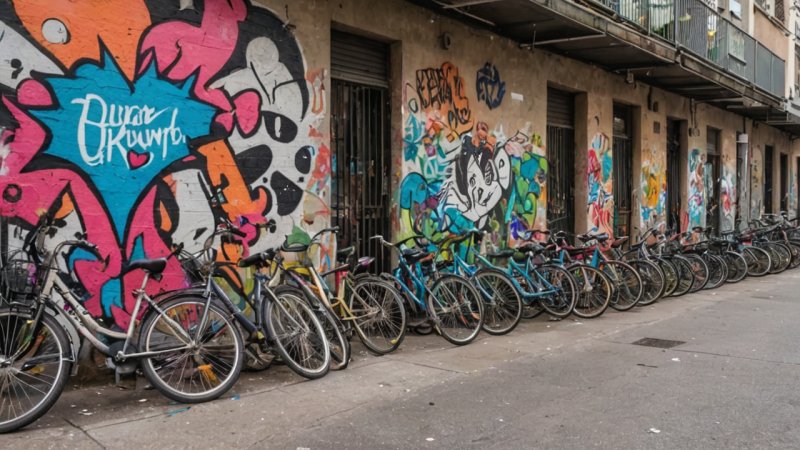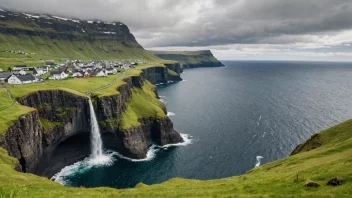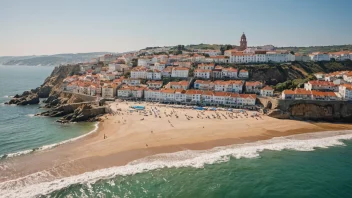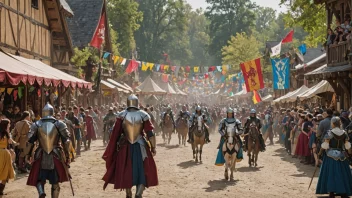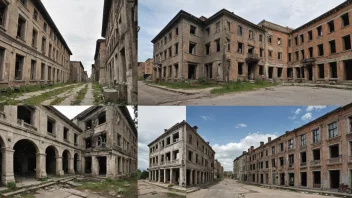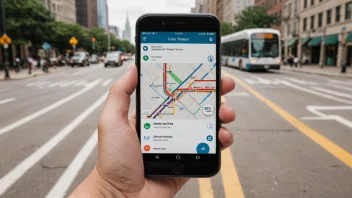Exploring the world of art and design can be a transformative experience, and the journey is just as important as the destination. From the bustling streets of Paris lined with galleries to the serene canals of Venice showcasing breathtaking architecture, the way you travel can significantly enhance your artistic adventure. This guide is dedicated to providing you with essential transportation tips to maximize your experience on art and design tours, ensuring you make the most of your time and resources while indulging in the creative wonders of different cultures.
Understanding the Importance of Transportation in Art Tours
Transportation is often overlooked when planning art and design tours, yet it plays a crucial role in shaping your overall experience. The right mode of transport can facilitate access to hidden gems, local exhibitions, and remote studios that might otherwise be missed. Additionally, efficient transportation allows travelers to maximize their itinerary, ensuring that they can visit multiple sites in a single day without feeling rushed.
Choosing the Right Mode of Transportation
When embarking on an art and design tour, consider the following modes of transportation to enhance your journey:
- Public Transport: In many cities, public transport systems such as buses, trams, and subways are not only cost-effective but also provide an authentic glimpse into daily life. Cities like Berlin, London, and Tokyo have excellent public transport networks that connect major art districts and galleries.
- Bicycles: Many art-focused cities are bike-friendly and offer rental services. Cycling allows for a leisurely pace, letting you stop spontaneously at intriguing spots. Cities like Amsterdam and Copenhagen are renowned for their bike culture.
- Walking: Sometimes the best way to absorb the art and architecture of a city is on foot. Walking tours can lead you to museums, galleries, and street art that might be missed when traveling by vehicle.
- Car Rentals: If you're venturing into regions with sparse public transport, renting a car can provide the freedom to explore at your own pace. This is particularly useful for visiting rural art studios or events that are off the beaten path.
- Ride-Sharing Services: Services like Uber or Lyft can be a convenient option, especially in cities where parking is limited and public transport may not reach every destination.
Planning Your Art and Design Itinerary
To optimize your art and design tour, a well-planned itinerary is essential. Here are some tips to create an engaging itinerary:
- Research Local Events: Before your trip, research art exhibitions, design fairs, and local events happening during your stay. Websites like Eventbrite or local tourism boards can provide valuable information.
- Map Out Key Locations: Create a map of must-visit galleries, museums, and studios. Utilize apps like Google Maps to chart a course that minimizes travel time and maximizes destination exposure.
- Time Management: Allocate sufficient time for each stop on your itinerary. Some galleries may require more time to fully appreciate the artwork, while others may be quick visits.
- Include Breaks: Art tours can be mentally stimulating, so remember to schedule breaks at cafes or parks to relax and recharge.
Unique Experiences to Consider
Art and design tours can include unique experiences that deepen your connection to the local culture. Here are a few suggestions:
- Artist Studio Visits: Seek out opportunities to visit local artists’ studios. This intimate experience can provide insight into their creative processes and inspire your own artistic endeavors.
- Workshops: Participate in art or design workshops that allow you to learn new skills and techniques from experienced artists. Many cities offer classes ranging from painting to pottery.
- Street Art Tours: Explore the vibrant street art scene in cities like Buenos Aires or Melbourne. Guided street art tours can unveil the stories behind the murals and the artists who created them.
- Architectural Tours: Don't miss the chance to explore the architecture that defines a city. Consider guided tours that focus on historical buildings or contemporary design landmarks.
Tips for Sustainable Transportation Choices
As travelers become more environmentally conscious, integrating sustainability into your transportation choices is vital. Here are some tips:
- Public Transport: Use public transport whenever possible to reduce your carbon footprint.
- Walk or Bike: Choose walking or biking routes over driving to minimize emissions and immerse yourself in the surroundings.
- Carpooling: If you need to use a car, consider carpooling with fellow travelers to reduce the number of vehicles on the road.
Safety Considerations While Traveling
Safety should always be a priority when traveling. Here are some tips to ensure a secure art and design tour:
- Stay Aware: Be vigilant about your surroundings, especially in crowded public transport areas. Keep an eye on your belongings to avoid theft.
- Travel Insurance: Consider purchasing travel insurance that covers theft, medical emergencies, and cancellations.
- Know Local Customs: Familiarize yourself with local customs and regulations regarding photography in galleries or public spaces to avoid misunderstandings.
Conclusion
Embarking on an art and design tour is a rewarding experience that allows for personal growth and cultural appreciation. By carefully considering your transportation options and planning an engaging itinerary, you can unlock a world of creativity and inspiration. Whether you choose to navigate bustling city streets via public transport, cycle through scenic neighborhoods, or explore on foot, your journey will be enriched by the art and design you encounter along the way. Remember to embrace spontaneity, seek unique experiences, and prioritize safety as you immerse yourself in the artistic wonders of the world.
